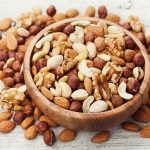
Obese young children may have less risk for high blood pressure if their mother took the omega-3 fatty acid DHA — found in fish oil — during pregnancy, new research suggests. The findings could be important since rising numbers of American children are obese and experiencing hikes in blood pressure. That could have long-term consequences for their health, said study co-author Susan Carlson. She’s professor of nutrition at the University of Kansas. “It is known that blood pressure tracks over time, such that people with higher blood pressure early in life are more likely to have higher blood pressure later in life,” she said in a university news release. The study tracked 171 children born in the Kansas City area. During pregnancy, half of the children’s mothers took 600 milligrams a day of DHA (docosahexaenoic acid) — which is found in prenatal vitamins, fish oil supplements and fish — while the other half took a placebo. The children’s blood pressure was then checked a number of times between the ages of 4 and 6. Among kids who were overweight or obese, higher blood pressure was found in those whose mothers took a placebo during pregnancy, but not in those whose mothers took DHA during pregnancy, the researchers found. On average, overweight/obese children of mothers in the placebo group had 3.94 mm Hg higher systolic (top… read on >

























-300x200.jpg)










